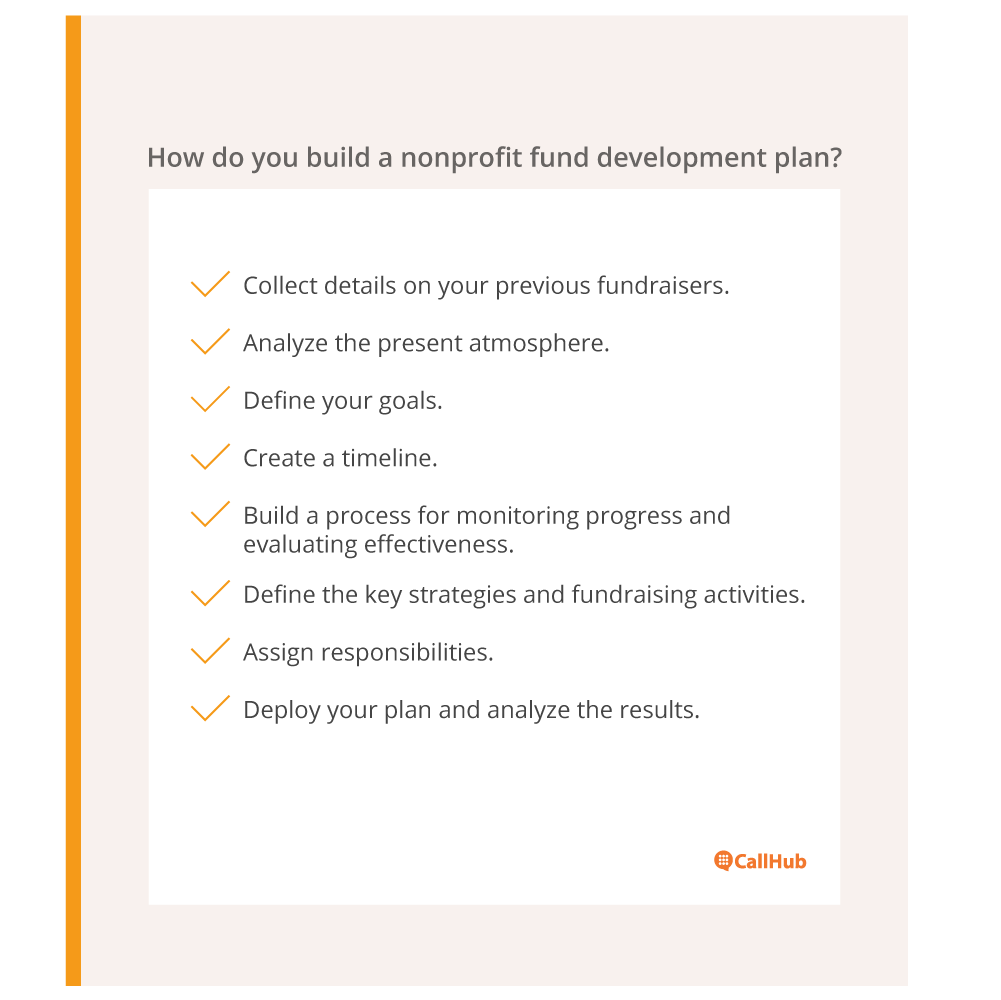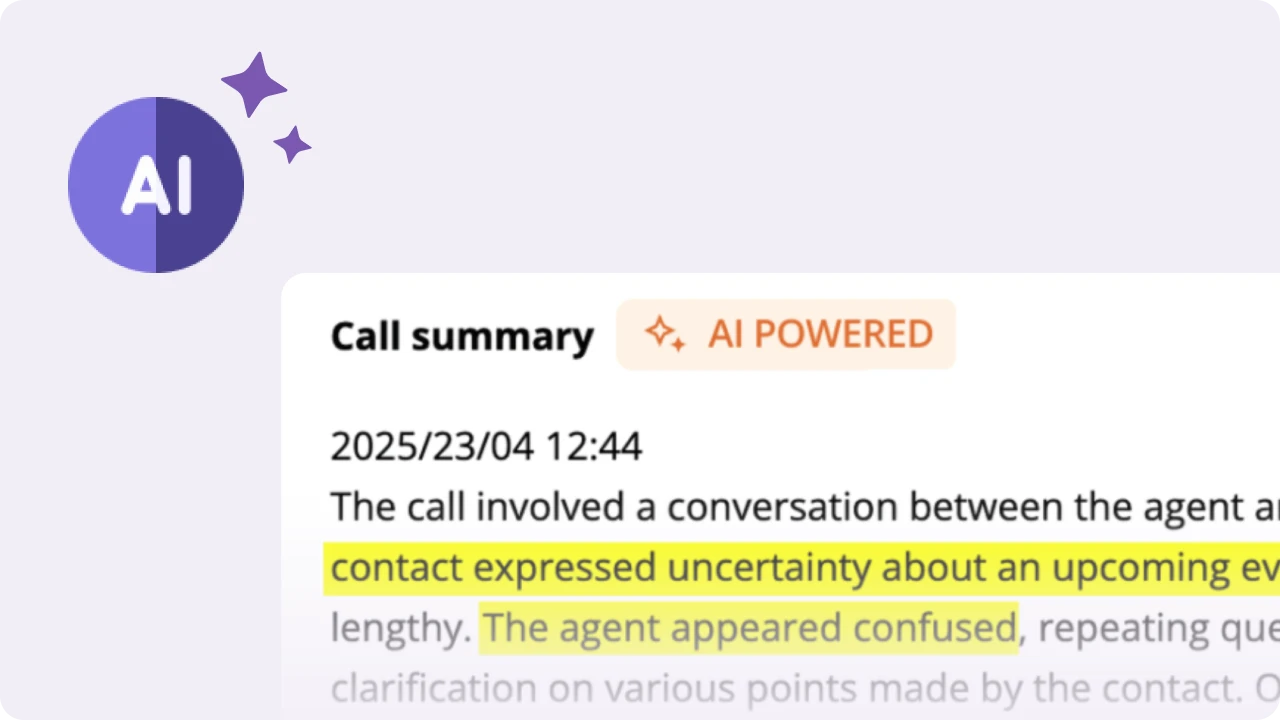Table of Contents
With a powerful nonprofit fund development plan, measuring your progress against your fundraising goals becomes a walk in the park. Moreover, you can effectively manage priorities and meet deadlines.
A nonprofit fundraising plan thereby acts as the bible for your development program. Therefore, forming a plan with great attention to detail paves the best way to flawless execution, ultimately leading to accomplishing the targeted results.
What is a nonprofit fund development plan?
A fund development plan focuses on strategically positioning an organization to develop its assets, especially funds, by forming relationships with potential donors. To build such relationships, organizations require
- A vision
- Organization’s mission
- Innovative and productive strategies, and
- A strong communication plan.
These requirements tell us that a good nonprofit development plan depends on two primary elements:
- Relationship with people
- Strategies and practices
Both require substantial time and effort, and a solid fund development plan could help you lay a strong foundation.
An effective nonprofit fund development plan should accomplish the following:
- Lay feasible/smaller goals and strategies for development.
- Evaluate the return on investment.
- Examine the internal and external environment and its ability to handle new strategies and capitalize on opportunities.
- Educate staffers and volunteers on the crucial principles of philanthropy and the purpose of development and direct them towards execution.
- Engage the stakeholders and build strong relationships.
- Establish benchmarks and ways to measure the results.
Why is a nonprofit fund development plan essential?
Imagine navigating a challenging terrain without a map—that’s fundraising without a solid plan. Remember, as Antoine de Saint-Exupéry famously said,
“A goal without a plan is just a wish”
For nonprofit leaders, an annual development detailed plan isn’t merely a document—it’s your strategic fundraising blueprint to drive fundraising success and reduce stress. With clear objectives for donor retention rates, acquisition, and engagement, every step you take becomes purposeful.
Also check fundraising plan template here.
What is the difference between nonprofit fund development and fundraising?
Fund development and fundraising have quite a few different characteristics. Fundraising comprises activities your nonprofit needs to execute to raise more money. For example, sending a donation appeal, hosting a fundraiser, etc., are considered part of fundraising events.
Fund development is the process of building and enhancing relationships to support fundraising. Here is the brief table that talks clearly:
| Key Elements | Fund Development | Fundraising |
| Scope | Comprehensive, strategic planning process | Focused, campaign-specific fundraising initiatives |
| Timeframe | Long-term, sustainable approach | Short-term, immediate results |
| Relationship | Cultivating lasting donor engagement | Securing direct, one-time contributions |
| Approach | Integrated, multi-channel strategy | Direct appeals and event-driven tactics |
| fundraising goal | Build a robust, sustainable revenue goal | Achieve quick funding targets for specific needs |
While fundraising only focuses on income generation, development defines strategies and tactics to target prospective current donors, communicate with them, and strengthen the concept of philanthropy.
Fund development includes looking at all the aspects and factors that affect fundraising and provide the necessary support.
How do you do nonprofit fund development?
The process of creating a nonprofit fund development plan requires smart strategies and fundraising efforts.
With a solid understanding of the overall picture, you will know what you need to do to get to where you want to be. This gives you the liberty to proactively plan and execute the strategies.
1. Collect details on your previous fundraisers
The first step is to find out the different sources of funds and the size of each, based on your previous fiscal years’ figures. This may include individual donors, companies, government, etc. Analyze these details from 5-6 years to get a hold of the right insights.
Consider acquiring answers to these questions:
- Which medium has brought in the most funds?
- Is there room to optimize anything?
- Should we eliminate a strategy?
- Which strategy should be prioritized?
2. Analyze the present atmosphere
In addition to aligning your set fundraising goals with your previous achievements, considering the present is essential. For instance, online giving grew by 12.1% over the past year.
You will need to understand the positive and negative factors that impact development. These factors may be internal or external.
Here are some examples:
- The giving trends
- The impact of your mission in the current atmosphere
- Budget requirements
- Social issues
- Communication preferences
- Competition
Evaluate your nonprofit against all these factors and consider how they affect your plan.
3. Define your goals
Consider goals from all aspects of your development plan. This primarily includes:
- Strategic,
- Operational, and
- Financial goals.
While financial goals focus on the funds you need, the strategic goals define the strategies you need to acquire those funds. Similarly, operational goals focus on the elements you need to implement those strategies to reach your financial goals.
More importantly, your goals need to be in line with your cause.
Some questions you need to consider are:
- What’s the total amount of money you need to raise?
- What are the expenses?
- What’s the required workforce size?
- What does the timeline look like for each team and activity?
- Which channels should I consider?
Define specific details like these for a clear goal and a path forward.
4. Create a timeline
Organize your planned activities in a calendar. Some activities are one-time things, and some are recurring. Make sure you plan all with a timeline in mind.
Your timeline can be defined in line with monthly deadlines. Your monthly timelines come together to define your annual goals.
Before anything, make sure your deadlines are reasonable and don’t disrupt your volunteers’ personal level lives.
5. Create a process to measure progress and evaluate results
Before you proceed with executing and monitoring your strategies, it’s essential to know what you’re going to measure. Of course, your north star is the total funds collected. But, for your development plan, you need to broaden your horizons.
Here’s your key performance indicators to measure:
- Donor retention rates
- Acquisition rate of donors
- Engagement rate of donors
- Frequency of donor contact
- Referral rate
Document every important metric and insight you have regularly. This is essential to improve your marketing strategy and, thereby, your performance.
6. Define the key strategies and fundraising activities
Strategies to build relationships are the most critical part of your nonprofit fund development plan. This involves building and enhancing relationships with both internal and external stakeholders.
All that nurturing and building relationships is with the ultimate goal of developing funds for your nonprofit. So, include strategies for all types of asks. This includes face-to-face and virtual solicitation.
When it comes to activities, there are two types –
- Acquiring donors
- Retaining donors
For each stage of your donor’s journey, your solicitation strategy needs to be different. For instance, a prospective donor would be motivated to give if you showed them the outcome of a recent campaign along with the fundraising efforts put in. At the same time, a recurring donor would be more interested in your plans for the upcoming year and how you’re going above and beyond to acquire more donors to support your journey.
Constant nurturing is the key to building relationships, and relationships are the basis of your development.
The usual activities are:
- Sending direct emails and newsletters
- Thank-you calls
- Surveys, etc.
7. Assign responsibilities for your nonprofit fund development plan
What responsibilities do the staff members take on? What should your board members do? Where do they fit into your development plan?
The more people you have on the team, the more people you build relationships with, ultimately leading to more funds. Determine the involvement of your volunteers, board members, new supporters, and donors, etc.
For instance, who is responsible for researching the fundraising platforms and annual giving recommendations, who would tell you which channels gave the most, etc.
This ensures that all parts of your plan are executed without overwhelming any of your team members. Here’s an example:
| Activity | Owner | Deadline |
| Research and arrive on a fundraising platform. | Raymond | 15th September 2021 |
| Discover the most effective fundraising channels. | Helen | 21st September 2021 |
| Prepare the first set of donors to reach out to in the nurturing journey. | Eric | 1st October 2021 |
8. Deploy your plan and analyze the results
The final step is that, once you have your plan in place, share it with the involved teams and give them the right permissions and ownership.
Now, let the plan get executed as per your assigned responsibilities, and you can measure the progress according to the defined metrics.
The planning and the execution both require great attention to detail.
Here’s a summary of what we discussed so far:

Get started with nonprofit fund development plan today!
As we mentioned earlier, a nonprofit fund development plan goes beyond fundraising by providing a framework for the bigger picture.
Building a nonprofit fund development plan is about two things:
- Connecting your mission to development.
- Connecting people to your mission.
Once you have a plan that addresses these, you’re well on your way to successful development.
What is your take on nonprofit fund development, and how do you go about it? Let us know in the comments below!
Featured image: Photo by Matheus Bertelli from Pexels


